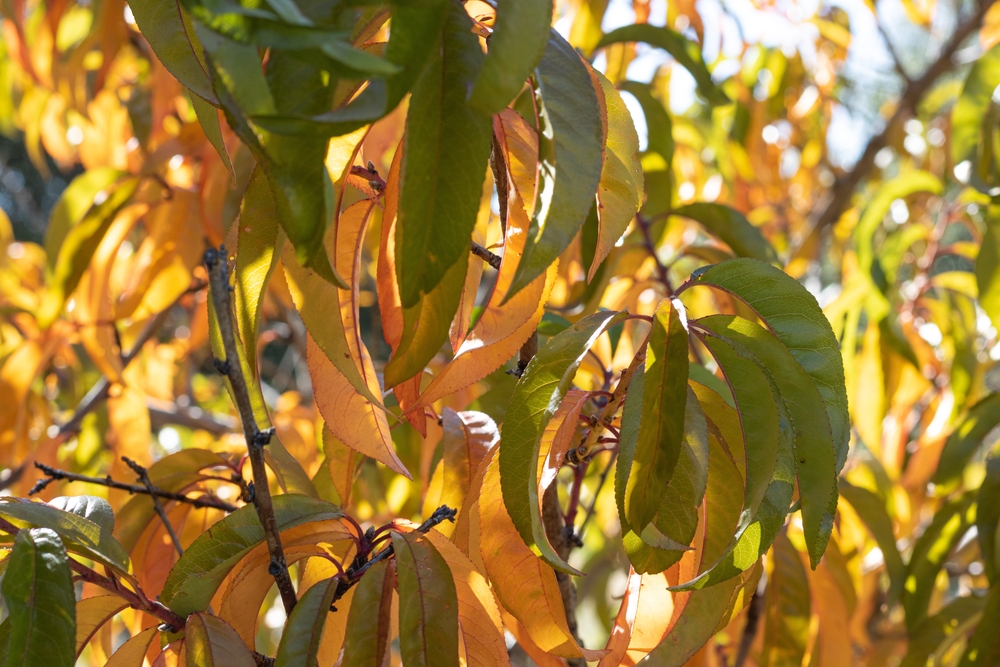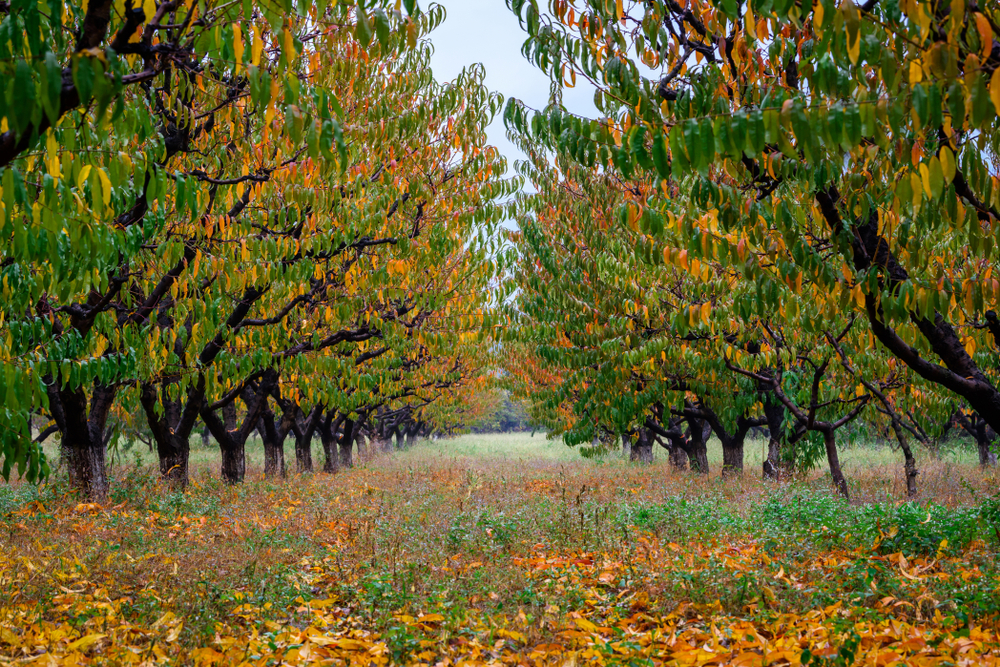We all know that peaches can have red hues, but first-time peach tree owners may not expect their plant’s leaves to turn red. That’s an accurate assumption in some cases. But red leaves on peach trees are often natural, and there’s no cause for concern.
Red Leaves on Peach Trees
We’ll share the many reasons peach trees get red leaves so that you can take action if needed.
Standard Fall Foliage
Peach trees are deciduous, meaning they lose their leaves in the fall to prepare for winter. But before dropping their leaves, peach tree leaves turn an array of brilliant colors, including red, orange, and yellow.
So, if fall has arrived and your peach trees develop red foliage, it’s safe to assume that mother nature is harmlessly doing her work.
Too Much Rain
If you’ve had higher than average amounts of rain, overwatering could be causing your peach tree’s foliage to become discolored. Too much rain is challenging because you can’t control mother nature.
Nevertheless, you should stop watering your peach tree—if you water it—until the soil dries significantly after lots of rain.
Young peach trees need more frequent watering (about three times per week) than older peach trees with more developed roots. So, it’s also important to back off watering your peach tree once it reaches its adolescent and adult stages to prevent issues associated with overwatering.
Fungus Infections
Many fungal infections can impact peach trees. But peach leaf curl is one of the most common causes of a tree’s foliage turning red.
Peach leaf curl occurs from the fungus Taphrina deformans. It can spread between peach and nectarine trees, making this a persistent problem for people who have neighbors with trees infected with this fungus. Peach leaf curl also impacts the blossoms, fruit, and new shoots.
You can treat fungus infections with fungicide. But you’ll likely need to wait for the next growing season to see the impact.
Pest Infestations
Peachtree borers and aphids are some of the most common pests that can cause trees to develop red leaves.
Peachtree borers are damaging insects that attack many types of trees by burrowing into their trunk, disrupting the tree’s vascular system. In contrast, aphids suck the sap from peach trees’ leaves, stems, and roots.
You’ll need to apply insecticide to control pest infestations. Once you get the problem under control, maintaining your peach trees by periodically using an insecticide is crucial.
Excessive Heat
Peach trees sometimes appear to react to heat waves by their foliage changing color. There isn’t yet scientific evidence to explain why this could be. But your peach tree likely changes the color of its leaves as a response to feeling stressed.
When your peach tree grows leaves the following spring, you can expect them to be green again.
A Note On Naturally Red Leaf Peach Trees
If you stumble upon a peach tree with reddish-purple leaves, this may be the tree’s natural leaf color.
Several varieties of peach trees exist on the market that boast reddish-purple leaves. Two examples include:
- Royal red leaf
- Bonfire
So, before assuming the peach tree is ill or has poor growing conditions, verify whether it’s a type that always grows red leaves.
Final Thoughts
Most of the time, red leaves signify a normal part of nature or a harmful but fixable condition.
Nevertheless, some peach tree owners report their peach trees developing red leaves for no reason. In that case, as long as you’re giving your peach tree optimal growing conditions and keeping pests and fungus under control, it’s safe to chalk it up to red leaves being a phase.

